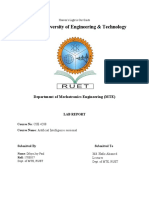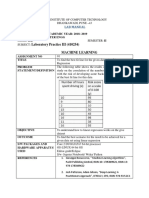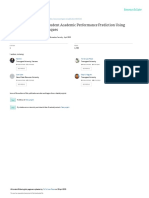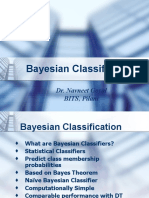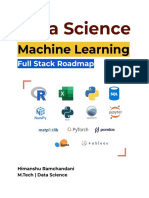0% found this document useful (0 votes)
22 views30 pagesMachine Learning
This document is a lab file for a Machine Learning course (CIE - 421P) submitted by Ayush Mishra. It includes an index of experiments covering various machine learning algorithms such as simple linear regression, logistic regression, decision trees, and K-Nearest Neighbors, along with their respective aims and code implementations. The document serves as a practical guide for students to learn and apply machine learning techniques using Python libraries like Pandas, NumPy, and Scikit-learn.
Uploaded by
Rahul KumarCopyright
© © All Rights Reserved
We take content rights seriously. If you suspect this is your content, claim it here.
Available Formats
Download as PDF, TXT or read online on Scribd
0% found this document useful (0 votes)
22 views30 pagesMachine Learning
This document is a lab file for a Machine Learning course (CIE - 421P) submitted by Ayush Mishra. It includes an index of experiments covering various machine learning algorithms such as simple linear regression, logistic regression, decision trees, and K-Nearest Neighbors, along with their respective aims and code implementations. The document serves as a practical guide for students to learn and apply machine learning techniques using Python libraries like Pandas, NumPy, and Scikit-learn.
Uploaded by
Rahul KumarCopyright
© © All Rights Reserved
We take content rights seriously. If you suspect this is your content, claim it here.
Available Formats
Download as PDF, TXT or read online on Scribd
/ 30


































